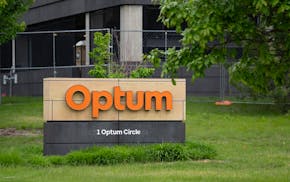After a tough couple of years, Target executives on Tuesday unveiled a roadmap to growth that includes 300 new stores, more store remodels and a revamped loyalty program.
The ultimate goal: increasing revenue over the next decade by $50 billion, or nearly 50%.
To get there, executives said the Minneapolis-based retailer also will need to continue growing its private-label offerings, partnerships with brands such as Ulta and Disney, and its curbside and same-day delivery services.
They laid out their strategic plan at an investors meeting in New York City.
"Are the updates we shared enough to get Target back to growth?" CEO Brian Cornell asked. "The answer is is absolutely. We're confident that the roadmap we've outlined today puts our core strengths, capabilities and points of difference to work in new ways with even greater value, relevance and ease for current guests and U.S. consumers more broadly."
Earlier in the day, officials said same-store sales slid another 4.4% in November, December and January, the third straight quarter of declines. Executives said sales would continue to sag into the spring, but hopefully pick up in the second half of the year.
In the coming years, they hope to grow revenue by about 4% a year.
While sales have been a struggle of late, Target had surprisingly strong profits in the fourth quarter. Net income jumped 58% to $1.4 billion and earnings per share came in much higher than analysts' expectations.
The lift was thanks in part to more than $500 million in cost-cutting measures last year as well as lower freight and fulfillment costs. Target also had fewer markdowns than the year before when it dealt with a glut of inventory that ate into profit margins.
Target's shares jumped 12% Tuesday to close at $168.58, one of the highest points in a year.
The loyalty program revamp includes changes to Target Circle and rebranding Target Redcard. One of the highly anticipated new initiatives is a paid membership program called Target Circle 360, which some experts see as Target's answer to Amazon Prime and Walmart+. The new program, which offers free same-day delivery on orders of more than $35, launches April 7 and offers similar benefits as a membership to Target-owned Shipt.
Brian Yarbrough, an analyst with Edward Jones, noted Walmart+ and Amazon Prime have add-ons that Target doesn't currently have, including streaming video and savings on gas.
"I don't think there's a ton new in there," he said of Target's revamped loyalty offerings. "It's just combining what was kind of three different programs and putting it all together."
Still, he said there are some helpful updates, such as its free-to-join Target Circle program, which launched in 2019, that soon will automatically apply deals and promotions at checkout so customers no longer have to search for and add the offers themselves.
Michael Fiddelke, Target's recently promoted chief operating officer, said in an interview that the updated loyalty program "provides a good foundation on which we can build over time."
He declined to share how many Shipt members Target currently has, but said he expects meaningful growth by combining the Target Circle program with same-day delivery under the new paid membership program.
He added it's tricky to calculate how much growth Target expects through the loyalty changes because they intersect with other improvements such as the retailer's strong assortment of brands.
Still, the changes have potential, some analysts said.
"In our view, Target Circle loyalty program improvements are compelling and can add traffic, transactions and incremental engagement opportunities," wrote Oliver Chen, an analyst with Cowen & Co., in a research note.
After opening roughly 200 new stores or so in the last decade, Target is stepping on the gas a bit with its plan to open 300 more over the next decade. It currently has about 2,000 stores in its network.
Whereas in recent years Target has opened many smaller footprint stores in urban areas or near college campuses, the new stores in the pipeline are more of its traditional larger-format stores and will be focused in more suburban locations, Fiddelke said.
He said Target sees good results from those bigger stores because they often are stocked with a broader array of products and have parking lots where they can offer DriveUp services.
"And we ship brown boxes out of the back of our big stores as well," Fiddelke said. "When we can be closer to our consumers, it means that shipping can be faster and cheaper than when we don't have a store."
Yarbrough noted that other retailers such as Walmart, Home Depot and Lowe's also have said recently they are going to pick up the pace of adding new stores, a shift from several years ago when many stopped opening stores because they were worried about Amazon.
"Fast forward to today and still two-thirds or three-quarters of sales are still done in a physical retail location," he said, echoing Cornell's comments from the meeting.
In addition, Target executives said the company will remodel most of its stores in the next decade, with some getting incremental updates and others receiving bigger overhauls.
The plan comes after a year in which Walmart, a chief competitor, saw sales growth, including during the holiday season. Other national retailers reported mixed results.
Target leaders warned for months that consumers have pulled back as their budgets became more constrained from higher prices for basics like food. In addition, they pointed to higher interest rates, increased credit card debt and the return of student loan payments as pinching customers' wallets.
Christina Hennington, Target's chief growth officer, said Tuesday that many consumers say they still feel stretched, but early signs of disinflation have contributed to a recent uptick in discretionary spending.
Target forecast comparable sales for the spring quarter to be down between 3% and 5%, but expects sales to improve later in the year. It forecast sales to be flat to up 2% for the full year.
In order to better appeal to budget-conscious shoppers, Target recently rolled out a new private-label brand called Dealworthy, which offers prices between $1 and $10 in various product categories.
At the other end of the spectrum, its next limited-time design partnership, which launches later this month, will be with Diane von Furstenberg.
Target's results in the fourth quarter and for the full year benefited from an additional week, which is factored out when calculating comparable sales. With that additional week, Target's overall revenue in the quarter rose 1.7% to $31.9 billion.
Over the full year, Target's revenue declined 1.6% to $107.4 billion.

In a first, Minnesota doctors walk their own picket line, then hustle to see patients
It's harder to find a job this year, especially a corporate position

Delta hiked fares for solo travelers, until Twin Cities travel experts caught the change

In first speech back, UnitedHealth's new CEO pledges to review hot-button issues

